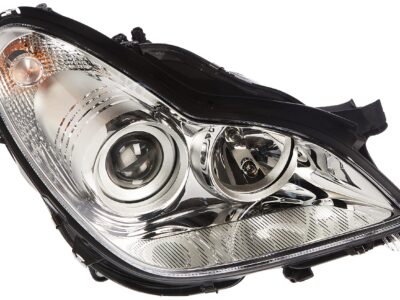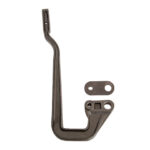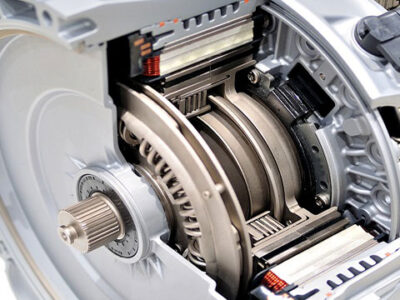
Fiat Panda Oil Consumption Problems: What You Need to Know

The Fiat Panda is a popular city car known for its reliability and fuel efficiency. However, some models have been plagued by excessive oil consumption issues, causing concern among owners. High oil consumption can lead to increased maintenance costs, engine damage, and potentially even engine failure if left unchecked. Understanding the causes and symptoms of this problem is crucial for Panda owners to take preventative measures and address the issue promptly. In this article, we'll explore the common causes and signs of oil consumption problems in Fiat Panda models and what you can do to resolve them.
Fiat Panda Oil Consumption Issues: Understanding the Causes and Consequences
The Fiat Panda is a popular city car known for its compact size and fuel efficiency. However, some owners have reported issues with excessive oil consumption, which can lead to increased maintenance costs and potentially damage the engine. In this section, we'll delve into the possible causes and consequences of Fiat Panda oil consumption problems.
Causes of Excessive Oil Consumption
Excessive oil consumption in the Fiat Panda can be attributed to various factors, including worn piston rings, cylinder wall wear, and faulty PCV (Positive Crankcase Ventilation) systems. These issues can cause the engine to burn more oil than usual, leading to increased oil consumption. Regular maintenance, such as checking the oil level and condition, can help identify potential problems early on.
Symptoms and Warning Signs
If your Fiat Panda is experiencing oil consumption issues, you may notice blue smoke emanating from the exhaust, increased oil level alerts, or low oil pressure warnings on the dashboard. These symptoms can indicate that the engine is burning oil at an alarming rate. It's essential to address these issues promptly to prevent further damage to the engine.
Prevention and Maintenance
To minimize the risk of oil consumption problems in your Fiat Panda, regular maintenance is crucial. This includes regular oil changes, checking the oil level, and inspecting the PCV system. By staying on top of these tasks, you can help prevent excessive oil consumption and reduce the risk of engine damage.
| Causes | Symptoms | Prevention |
|---|---|---|
| Worn piston rings, cylinder wall wear, faulty PCV systems | Blue smoke from exhaust, increased oil level alerts, low oil pressure warnings | Regular oil changes, checking oil level, inspecting PCV system |
What are the most common problems with a used Fiat Panda hatchback?

 DIY: Replacing the Front Seatbelt Anchors in Your Fiat Panda
DIY: Replacing the Front Seatbelt Anchors in Your Fiat PandaThe Fiat Panda is a popular city car that has been in production since 1980. When considering a used Fiat Panda hatchback, there are several common problems to be aware of.
Rust and Corrosion Issues
Rust and corrosion can be a significant problem for used Fiat Panda owners, particularly in areas where the vehicle is exposed to salted roads or high humidity. The Panda's bodywork is prone to rust, especially around the wheel arches, sills, and suspension mounts.
- Inspect the vehicle's bodywork for any signs of rust or corrosion, particularly in areas prone to moisture.
- Check for any rust repair patches or signs of previous rust treatment.
- Look for any signs of rust around the suspension mounts and steering components.
Engine and Transmission Problems
The Fiat Panda has been fitted with a range of engines over the years, and some have been more reliable than others. Some common engine problems include oil leaks, worn piston rings, and faulty fuel injectors. The transmission can also be prone to wear and tear, particularly if the vehicle has been driven aggressively or neglected.
- Check the engine oil level regularly to identify any potential leaks.
- Listen for any unusual engine noises, such as knocking or grinding sounds.
- Check the transmission for any signs of wear, such as slipping or hesitation between gears.
Electrical System Faults
The electrical system in a used Fiat Panda can be prone to faults, particularly as the vehicle ages. Some common issues include faulty dashboard lights, malfunctioning wipers, and problems with the audio system.
- Check the dashboard warning lights for any signs of faults or malfunctions.
- Test the vehicle's accessories, such as the wipers and audio system, to ensure they are working correctly.
- Check the vehicle's battery and charging system to ensure they are in good condition.
How do you diagnose engine oil consumption?

Diagnosing engine oil consumption involves a series of steps to identify the root cause of the issue. The process begins with monitoring the vehicle's oil level regularly to determine the rate of oil consumption. This can be done by checking the oil level at regular intervals, such as during each fuel stop or at the same time every week. It's essential to use the same dipstick and check the level when the engine is at the same temperature to ensure accurate readings.
You may be interested in reading DIY: Replacing the Front Seatbelt Anchors in Your Fiat Panda
DIY: Replacing the Front Seatbelt Anchors in Your Fiat Panda Resolving Fiat Panda Tailgate Release Mechanism Issues
Resolving Fiat Panda Tailgate Release Mechanism IssuesChecking for External Leaks
External leaks are a common cause of engine oil consumption. To check for external leaks, inspect the engine and its surroundings for any signs of oil leakage. This includes looking for oil droplets or stains on the engine, oil pan, and surrounding components.
- Inspect the oil drain plug and ensure it's tightened properly.
- Check the oil filter for any signs of leakage or damage.
- Look for any other potential sources of external leaks, such as loose or damaged fittings and seals.
Identifying Internal Leaks
Internal leaks can also contribute to engine oil consumption. To identify internal leaks, perform a series of tests to determine if oil is leaking into the combustion chamber or other internal components. This can include checking the engine's compression, performing a leak-down test, or using a smoke test to detect any internal leaks.
- Check the engine's compression to identify any potential issues with the piston rings or cylinders.
- Perform a leak-down test to determine if there's any leakage into the combustion chamber.
- Use a smoke test to detect any internal leaks, such as those caused by faulty valve stem seals or piston ring issues.
Analyzing Oil Consumption Patterns
Analyzing the oil consumption pattern can provide valuable insights into the root cause of the issue. This involves monitoring the rate of oil consumption under different driving conditions, such as city driving or highway driving. By analyzing the oil consumption pattern, it's possible to identify potential causes, such as excessive oil consumption during cold starts or high-speed driving.
- Monitor oil consumption during city driving to identify any potential issues related to frequent stop-and-go traffic.
- Check oil consumption during highway driving to determine if the issue is related to high-speed operation.
- Analyze the oil consumption pattern to identify any correlations with other factors, such as engine temperature or load.
Frequently Asked Questions
What are the common causes of high oil consumption in Fiat Panda?
The common causes of high oil consumption in Fiat Panda include worn piston rings, cylinder wall wear, and faulty valve stem seals. Additionally, a clogged PCV system or a malfunctioning engine control unit can also contribute to excessive oil consumption. Regular maintenance and inspections can help identify these issues early on, reducing the risk of engine damage.
How can I check the oil level in my Fiat Panda?
To check the oil level in your Fiat Panda, ensure the vehicle is parked on a level surface and the engine is turned off. Locate the oil dipstick under the hood, pull it out, and wipe it clean with a lint-free cloth. Insert the dipstick back into the oil reservoir and pull it out again to check the oil level against the minimum and maximum marks on the dipstick.
Is high oil consumption a common issue in Fiat Panda models?
Yes, high oil consumption is a reported issue in some Fiat Panda models, particularly those with higher mileage or those that have not been properly maintained. The issue can be caused by a variety of factors, including engine wear and tear, poor maintenance, or design flaws. It's essential to monitor oil levels regularly and address any issues promptly to prevent engine damage.
You may be interested in reading DIY: Replacing the Front Seatbelt Anchors in Your Fiat Panda
DIY: Replacing the Front Seatbelt Anchors in Your Fiat Panda Resolving Fiat Panda Tailgate Release Mechanism Issues
Resolving Fiat Panda Tailgate Release Mechanism Issues Fiat Panda Suspension Problems: Identifying and Fixing Common Faults
Fiat Panda Suspension Problems: Identifying and Fixing Common FaultsCan I still drive my Fiat Panda if it's consuming excessive oil?
While it's possible to continue driving your Fiat Panda if it's consuming excessive oil, it's not recommended. High oil consumption can lead to engine damage, decreased performance, and potentially cause the engine to seize or fail. It's best to identify and address the underlying cause of the issue to prevent further damage and ensure the longevity of your vehicle.

If you want to know other articles similar to Fiat Panda Oil Consumption Problems: What You Need to Know you can visit the category Fiat Panda.
Deja una respuesta






More content of your interest